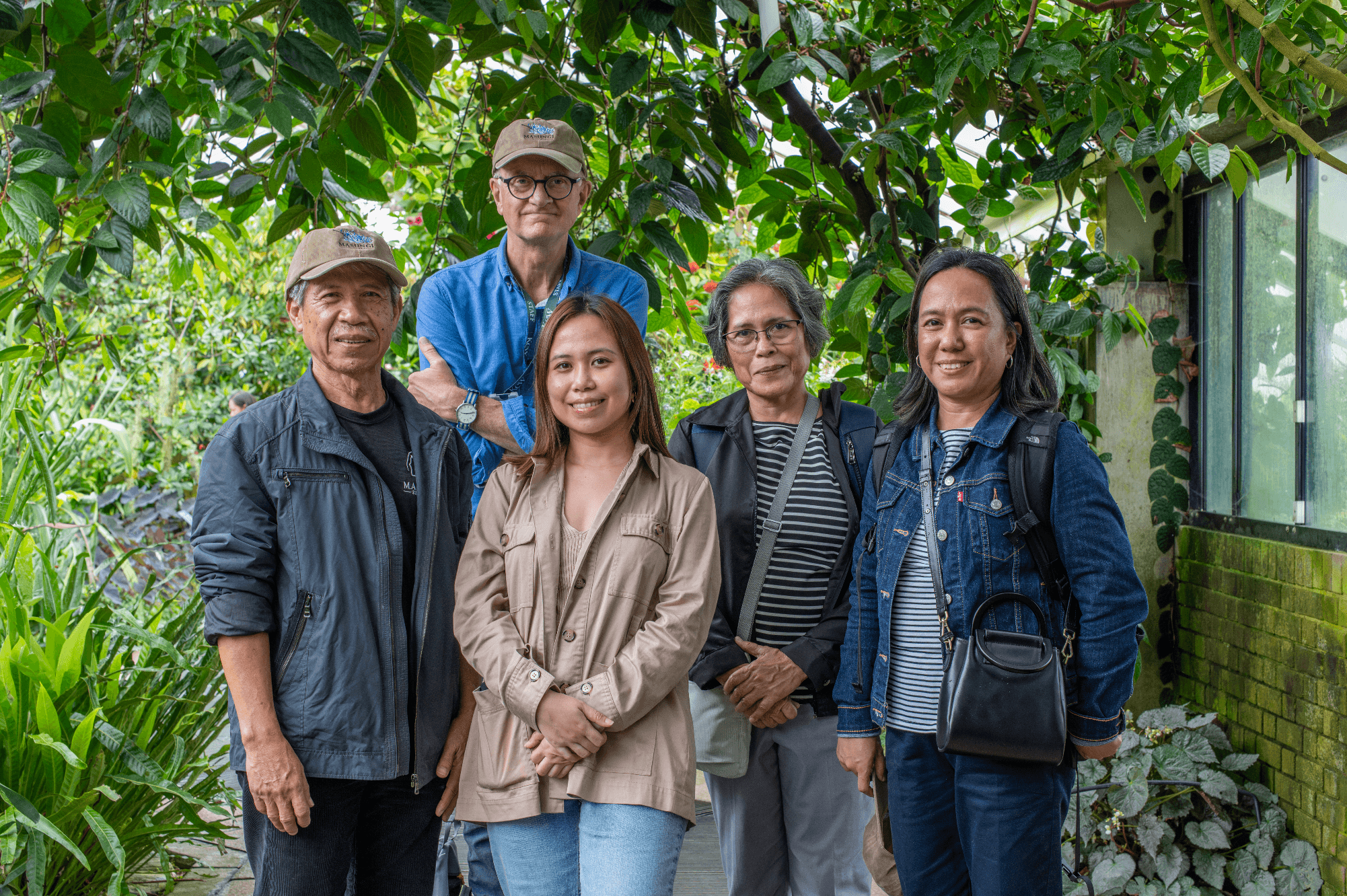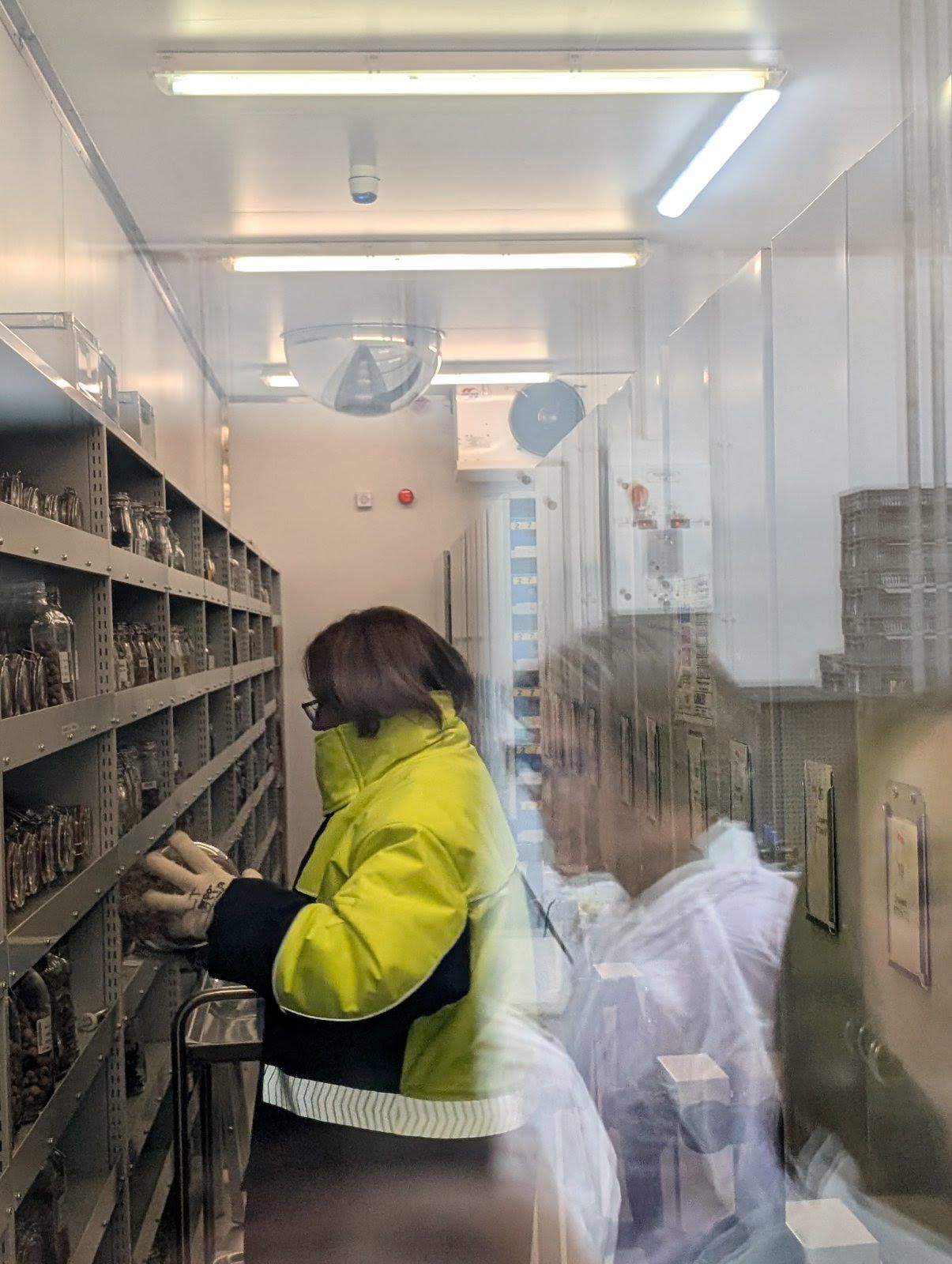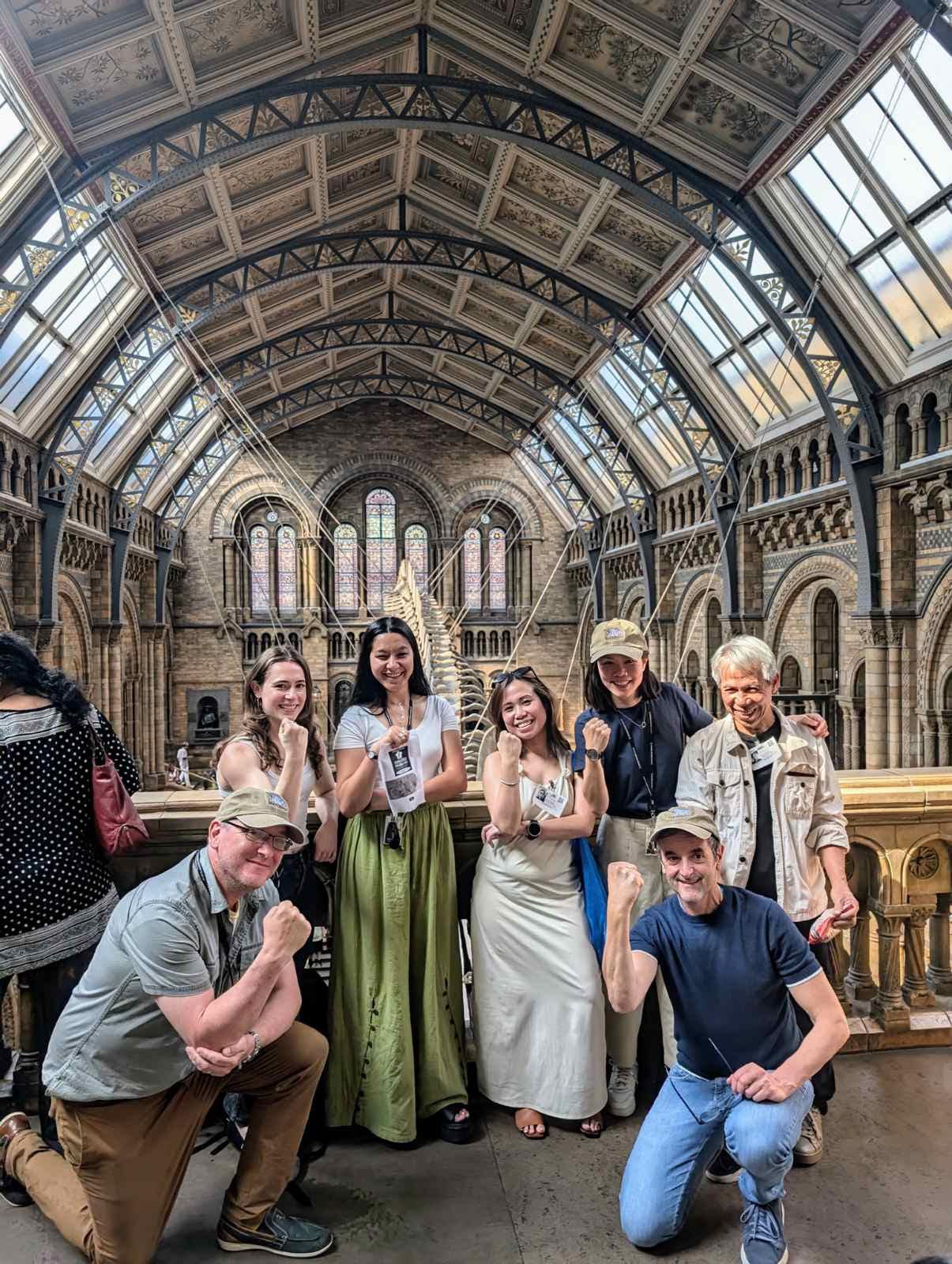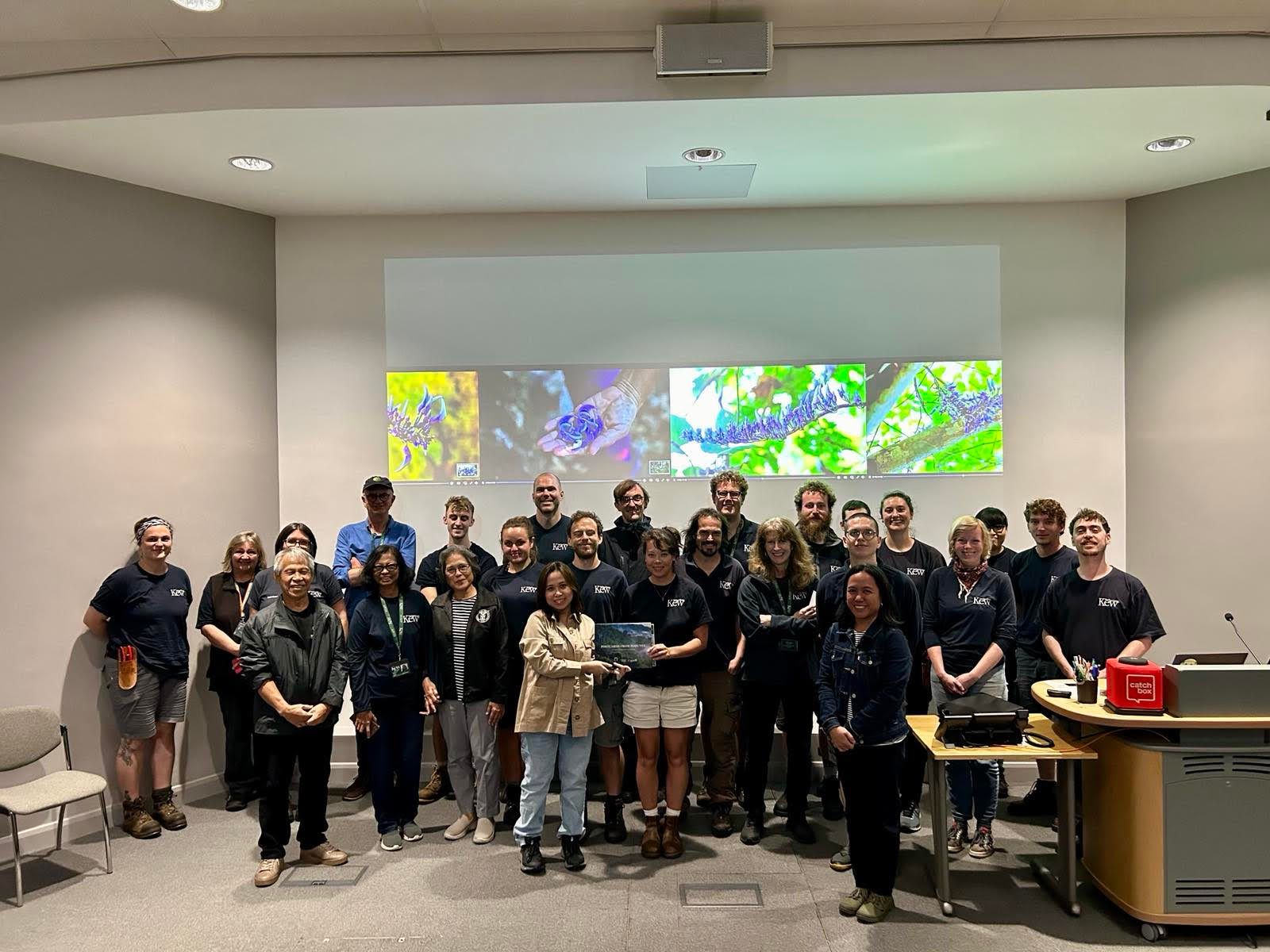Rare Philippine vine to shine at Royal Botanic Gardens, Kew
A few weeks ago, I had the privilege of visiting two of the United Kingdom’s most esteemed scientific and cultural institutions: the Royal Botanic Gardens (RBG), Kew, at both its London and Wakehurst, Sussex locations, and the Natural History Museum of London.
As part of a delegation from the UP Los Baños Museum of Natural History and the Masungi Georeserve Foundation, we participated in the formal handover of JC’s Vine (Strongylodon juangonzalezii) specimens to RBG, Kew. This donation marks a significant step in promoting the Philippines’ unique biodiversity and strengthening international collaboration on the research and conservation of this rare species.

Prior to the seed donation, the parties took careful measures to ensure proper inspection and transportation of the plant material and to guarantee fair access and benefit-sharing in accordance with international guidelines.
The importance of collaborating with global botanic gardens like RBG, Kew, in conserving endemic species cannot be overstated. Both in-situ (in the wild) and ex-situ (outside natural habitat) conservation efforts are critical, especially when a species' natural habitat faces severe threats from destructive activities and short-sighted policies.
“We look forward to seeing JC's Vine thrive outside its natural habitat, allowing more people to appreciate its beauty,” said Michelle D.R. Alejado, a member of the team that discovered JC’s Vine in 2015, during the turnover ceremony. “Both in-situ and ex-situ conservation are essential for protecting species that thrive on karst landscapes, and we are grateful for this partnership in safeguarding our Philippine biodiversity.”

JC’s Vine has only been officially documented in four locations across the Philippines, with the Masungi Georeserve serving as its primary research and observation center. The accessibility, abundance, and maturity of its population there allow scientists to study and document the entire lifecycle of this stunning vine—from pollination and fruiting to germination and growth.
The Royal Botanic Gardens, Kew, is a highly prestigious institution that nature lovers would describe as "a green thumb’s heaven." It is globally renowned for its unparalleled collections and scientific expertise in plant and fungal diversity, conservation, and sustainable development. Kew’s scientists and their partners are at the forefront of combating biodiversity loss and discovering nature-based solutions to the climate crisis.
With nearly 1,000 staff members, half of whom are scientists and experts, Kew offers a robust guarantee that JC’s Vine will flourish under their care. Even in the worst-case scenario, this ex-situ conservation effort ensures that JC’s Vine will continue to thrive and be protected.

Simon Toomer, head of living collections at RBG, Kew, personally guided our tour through the gardens' famous glasshouses and nurseries, which house more than 20 different climatic zones representing diverse ecosystems. Here, JC’s Vine seeds will be nurtured before they are displayed in one of the glasshouses, possibly the iconic Palm House.
Our delegation also visited the Wakehurst location of RBG, Kew, about an hour and a half’s drive from Central London. Wakehurst is Kew’s wild botanic garden in the heart of Sussex, home to the Millennium Seed Bank, which holds over 2.4 billion seeds from around the world, preserving them for the future. The rugged terrain of Wakehurst offered us a chance to observe wilder natural landscapes and the management of meadows and woodlands.
We concluded our visit with a trip to the Natural History Museum of London (NHM London), where we reconnected with colleagues at the forefront of research and public engagement. The museum shared some of its finest specimens from the Philippines and the world, dating back centuries, including an impressive beetle collection of over 10 million specimens—some of which were collected by Charles Darwin himself.

Despite the differences in history and landscape among these institutions, three key observations stood out:
1. The success and longevity of these institutions are anchored in science and cutting-edge content, with hundreds of scientists working behind the scenes at both RBG, Kew, and the NHM of London.
2. Engaging the public, particularly in the digital age, is crucial. Both institutions have adapted to modern trends while respecting their rich traditions. For instance, the NHM London has successfully attracted younger audiences by hosting silent discos in its galleries, allowing visitors to dance beneath a giant dinosaur.
3. Sustaining these institutions requires innovative marketing and revenue streams. While both RBG, Kew, and the NHM London receive government funding (30 percent for Kew and 50 percent for NHM London), a significant portion of their income is self-generated through venue hires, merchandise, food services, and events. As these institutions emphasized, this self-generated income is increasingly necessary to support their operations.

Experts in London mentioned the International Rice Research Institute (IRRI) in the Philippines as a world-leading research center. The question now is whether we can cultivate more such institutions in the Philippines. The lessons from these UK institutions are clear: investing in science, public engagement, sustainable financing, and, perhaps most importantly, empowering passionate people can make it happen.
Finally, I would like to extend my gratitude to the British Embassy Manila, led by Ambassador Laure Beaufils, and Philippine Ambassador to the UK Teodoro Locsin Jr. for their support in fostering this international collaboration. The delegation would also like to thank our colleagues at RBG, Kew, and NHM London for taking time for this meaningful initiative, as well as the Department of Environment and Natural Resources Region IV-A and the Department of Agriculture - Bureau of Plant Industry for assisting in the relevant transport permits.